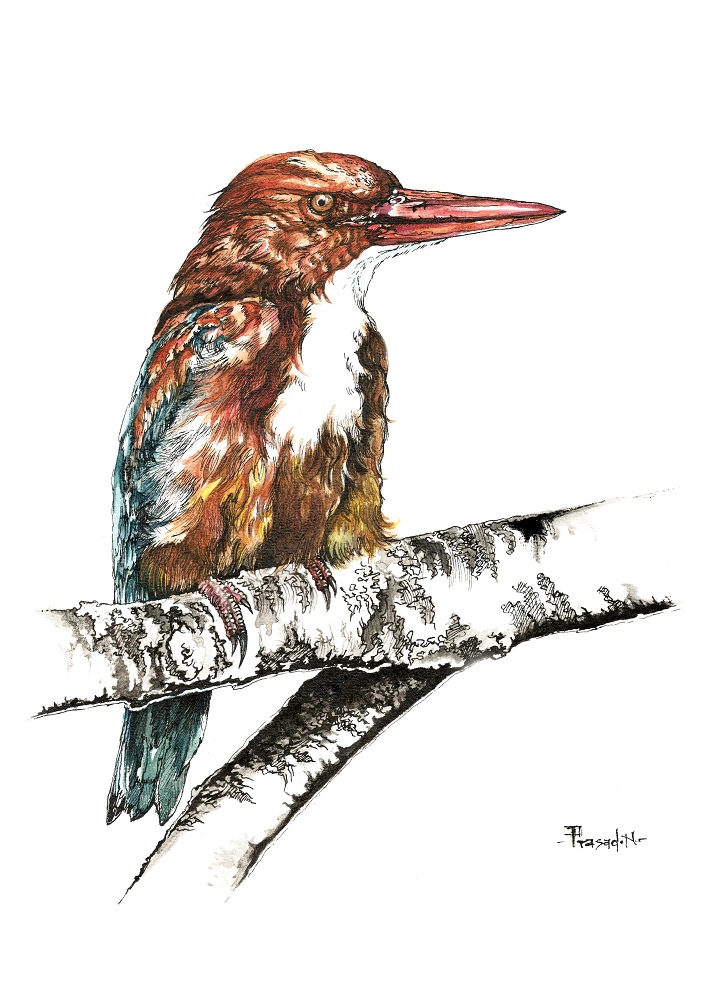

- Title: Hidden King!
- Medium: Ink and water color on paper
- Duration: 12 hours
- November-4th-2015
Hearty welcome to yet another edition of Birds of Bangalore,during my visit to Ranganathittu Bird Sanctuary got to watch our bird of this week at close distance. Boat safari is an excellent way to get close to birds and watch their behavior.
Last week on an early morning walk at Cubbon park, I heard calls of barbets, flowerpeckers, koels and sunbirds. Near the pond area, I found the oriental magpie robin singing to glory, so did the tickell’s blue, black kite soaring across the pond is such a pleasant sight to the eye. Suddenly at one of the dustbin I heard a call chake-ake-ake, it’s a familiar call however didn’t expect it coming from a dustbin.
Our bird of this week was looking for worms and other insects there!
White throated kingfisher (Halcyon smyrnensis) it was, their crown, forehead, nape are all colored coffee brown, beak is colored dark crimson red, dark brown eyes, their shoulders are also colored brown, throat and breast are colored white which gives them their name. Their back is colored blue, mantle is colored black, tarsus and legs are colored red. Both male and female look similar, young ones look dull in color and small in size.
Unlike the common kingfisher, the white throated kingfisher is a well-adapted to urbanization, their diet is varied, it could be fishes, insects, rodents, frogs, snakes and even seen preying on smaller birds. Which explains why I saw them near the dustbin at Cubbon park, however at the bird sanctuary it was the same bird feeding on fishes, its great to see how based on the habitat these intelligent birds adapt themselves!
In the urban spaces though they have adapted well, there is swift competition from black kites who hunt down small birds, they also face threat from common crows that attack any and every bird in their territory. Palm squirrels and garden lizard also feed on their eggs. In an ideal world situation it would be great to have clean waterbodies where this kingfisher could thrive; their body is built for numerous dives into water and catch prey off guard. I can’t stress enough on how important these lakes are to Bangalore, which lacks a river.
Another way to rejuvenate underwater table is through rain harvesting, we have few state governments who have made it compulsory for all houses to have rain harvesting. New houses in Bangalore have to get this done however it would be great if rain harvesting is made mandatory for the existing houses as well. Its great way to rejuvenate water-table and ensure that the coming generation need not face water crisis.
I’ve also observed in these parks that park authorities constantly trim the grass growth, killing thousands of insects, most of the birds in these parks depend heavily on insects, they also feed their younger ones with insects hence it would great if certain areas of the parks are left untouched. Its tough life for the birds in urban spaces, with constant noise harassment, air pollution, depleting waterbodies, however inspite all these challenges they are able to survive and breed. It’s our responsibility to create awareness and protect them, with these words I take leave.
Until next week, keep watching!